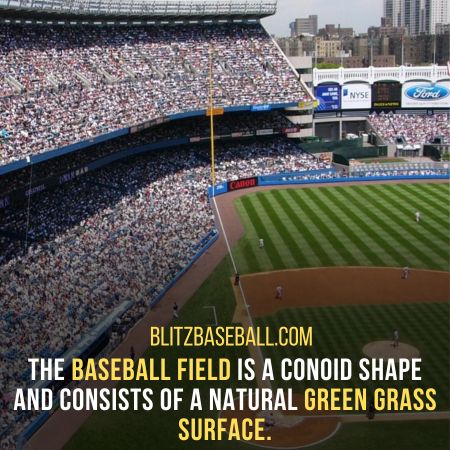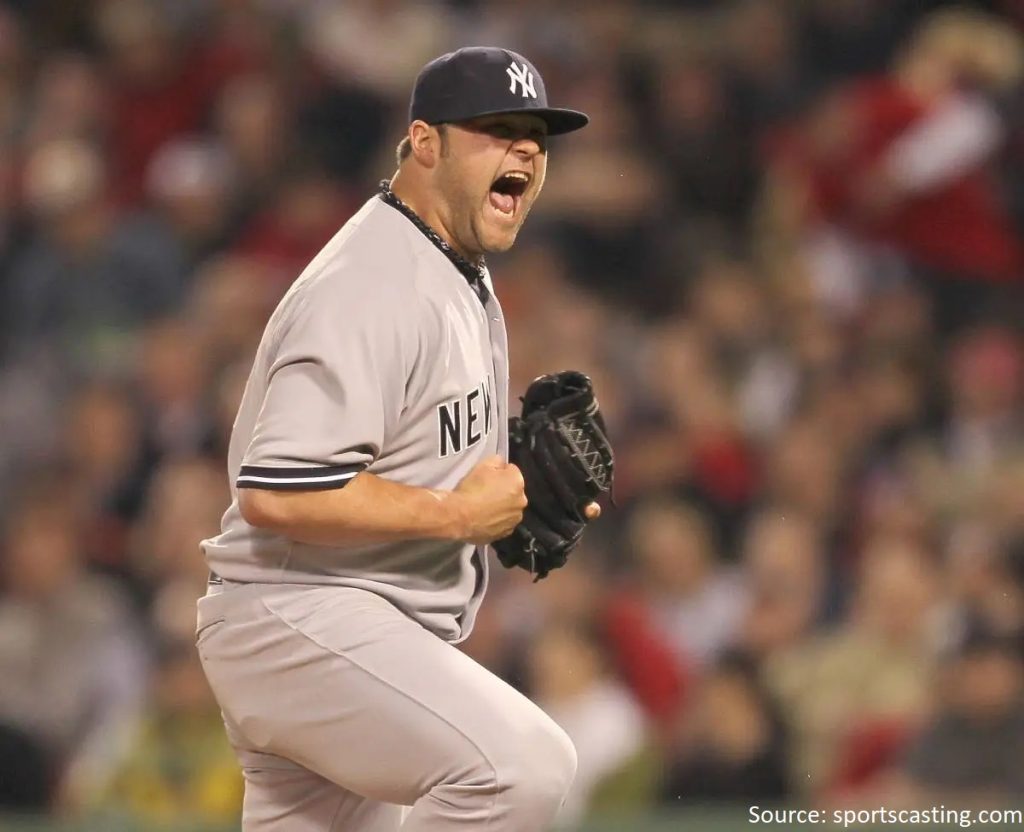This article provides a comprehensive baseball field overview of the specifications, layout, and dimensions of a baseball field.
It aims to offer a thorough understanding of the fundamental aspects of a baseball field, including the dimensions of the outfield, infield, and pitching mound.
Additionally, it discusses the positions of players on the field and provides specific measurements for different age groups and leagues.
The objective of this article is to present factual information about the various elements of a baseball field in an analytical and detailed manner.
By eliminating personal pronouns and adopting an academic style of writing, this article aims to maintain an objective and impersonal tone throughout.
Overall, this article serves as a valuable resource for individuals seeking to enhance their knowledge of the fundamental aspects of a baseball field.
Key Takeaways
- The baseball field is a conoid shape and consists of a natural green grass surface.
- The infield is a square shape with bases placed 90 feet opposite each other and is at the same level as home plate.
- The outfield is the area between the foul lines extending from the square.
- The dimensions of the home plate are 17 inches in the front, with adjacent sides of 8.5 inches each, and two sides connected at a length of 12 inches each.
Specifications: Baseball Field Overview
The specifications of a baseball field include:
- A natural green grass surface.
- A square-shaped infield with bases 90 feet apart.
- An outfield area between the foul lines.
- A minimum distance of 325 feet between the nearest fence and the home plate.
- A pitching mound with a 24 x 6 pitching rubber placed 10 inches above home plate.
Additionally, some ballparks have opted for the use of synthetic turf on the field, providing a more durable and consistent playing surface.
Foul lines are marked behind the home plate and extend from third base to first base, delineating the boundaries of fair territory. The area between the foul lines is known as foul territory, and it extends all the way to the foul poles located at the end of each line. Umpires use these foul poles to determine whether a hit ball is fair or foul.
Layout
Shaped like a conoid, the baseball field’s layout includes bases forming a diamond in the infield and a grassy outfield extending to the fences.
The field maintenance of a baseball field is crucial to ensure optimal playing conditions.
The outfield grass is an essential aspect of the field’s layout. It needs to be well-maintained, regularly mowed, and properly watered to provide a consistent playing surface.
The outfield grass should be cut to a specific height, usually around 1-1.5 inches, to allow for smooth ball movement and prevent uneven bounces.
It is also important to regularly inspect and repair any damaged areas of the outfield grass to ensure player safety and prevent interference with gameplay.
Proper field maintenance contributes to the overall quality and enjoyment of the game.

Dimensions
The dimensions of a baseball field are essential to ensure fair play and strategic gameplay. The field dimensions dictate the size and layout of the playing surface, which directly impacts the gameplay and strategy of the game.
In baseball, the field dimensions are standardized to create a level playing field for all teams. The size and shape of the field, including the distance between bases and the dimensions of the outfield, affect the speed and trajectory of the ball.
Additionally, the dimensions of the pitching mound and home plate determine the pitching distance and strike zone, respectively. These dimensions play a crucial role in the game, as they impact the strategies of both the offensive and defensive teams.
Overall, the field dimensions are carefully designed to create a balanced and challenging playing environment for all players.
Bases
Bases are essential components of a baseball field, serving as pivotal points for baserunners to advance and score runs. There are four bases in a baseball field: home base, first base, second base, and third base. Baserunners must make contact with each base in order to advance to the next base or score a run.
Each base has its own specific defensive responsibilities. The first baseman is responsible for defending first base and must be able to catch throws and tag baserunners out.
Second base, also known as the keystone corner, is defended by the second baseman. Baserunners on second base are considered to be in scoring position, meaning they have a higher likelihood of being able to score a run.
Third base is the closest base to home plate and completing a home run requires touching this base. The third baseman is responsible for defending third base and must be able to make quick throws and tag baserunners out.
Overall, the bases play a crucial role in the game of baseball, providing opportunities for baserunners to advance and for defensive players to make plays.
Pitching Mound
The pitching mound, located in the center of the baseball field, serves as the launching point for pitchers to deliver their pitches with increased grip and forward acceleration, providing them with an advantage in the game. The pitching mound plays a crucial role in the game, as it is where pitchers showcase their pitching techniques and try to outsmart the opposing batters.
Here are three key aspects of the pitching mound:
-
Height and Dimensions: The pitching mound is elevated 10 inches above the level of home plate, allowing pitchers to generate more downward force on their pitches. It has a diameter of 18 feet and includes a pitching rubber that measures 24 inches by 6 inches.
-
Strategic Positioning: The pitching mound is equidistant from first base and third base, ensuring fair play for both teams. This central location allows pitchers to have a clear view of the entire field and make accurate throws to various bases.
-
Pitcher’s Role: The pitching mound is the domain of the pitcher, who holds a crucial role in the game. The pitcher’s primary objective is to throw pitches that deceive the batters and prevent them from making solid contact with the ball. They utilize various pitching techniques, such as fastballs, curveballs, changeups, and sliders, to keep the opposing team off balance and give their team the best chance to win.

First Base
Moving on from the previous subtopic of the pitching mound, we now shift our focus to the first base.
Positioned 90 feet away from home plate in an anticlockwise direction, first base plays a crucial role in the game of baseball. Baserunners must make contact with first base in order to advance and potentially score a run.
The first baseman is responsible for defending the base and ensuring that opposing players do not reach it safely. To effectively carry out this defensive role, the first baseman must possess good reflexes, agility, and the ability to catch and field balls thrown their way.
Additionally, first base strategies involve maintaining good positioning to cover the base, anticipating the actions of baserunners, and making quick and accurate throws to other bases or home plate.
Overall, the first baseman plays a vital role in the defensive efforts of the team and contributes to the overall success of the game.
Second Base
Positioned 90 feet away from first base, second base serves as a key element in the game of baseball. Players must touch second base to score a run, making it a crucial position in offensive and defensive strategies.
Here are some important strategies and defensive techniques utilized at second base:
Double Play Execution:
- Second basemen often participate in executing double plays with the shortstop.
- They must receive the ball from the shortstop, step on second base, and throw to first base in one fluid motion.
Base Stealing Prevention:
- Second basemen are responsible for preventing baserunners from stealing third base.
- They must anticipate the runner’s movement and be ready to tag them out if they attempt to steal.
Covering the Bag:
- Second basemen must cover second base when the ball is hit to the outfield.
- This ensures that if the ball is thrown to second base, they are in position to make the play.
By mastering these strategies and defensive techniques, second basemen can greatly contribute to the success of their team on the baseball field.

Frequently Asked Questions
What are some common strategies used by pitchers on the pitching mound?
Pitchers on the pitching mound employ various strategies to outwit batters and gain an advantage. These include pitch selection based on the batter’s weaknesses, varying pitch speeds and locations, changing pitch sequences, and using deception techniques like changing arm angles or adding movement to pitches.
How are the outfielders positioned in relation to the infielders?
The outfielders are positioned behind the infielders in the outfield. The defensive alignment strategies determine the specific positioning of the outfielders based on factors such as the batter’s tendencies, game situation, and defensive strategy employed by the team.
What are the responsibilities of the catcher in the catchers box?
The responsibilities of the catcher in the catcher’s box include receiving pitches, calling pitches, and making decisions on how to handle baserunners. They must also master techniques for pitch framing and blocking, manage the pitching staff, and communicate with the infield and outfield.
Are there any specific rules or guidelines for coaches in the coachs box?
Specific rules and guidelines for coaches in the coach’s box include staying within the designated area, not interfering with the game, and not objecting to the opposing team. Coaches strategize with pitchers, outfielders, infielders, and assigned players.
How are the baseball field positions typically assigned to players?
Baseball field positions are typically assigned based on the player’s specific role and skill set. The battery consists of the pitcher and catcher, infielders play the basemen and shortstop positions, and outfielders cover the right, center, and left field.
Conclusion
In conclusion, the article ‘Baseball Field Overview with Fundamentals’ provides a comprehensive understanding of the specifications, layout, and dimensions of a baseball field.
It covers various aspects such as the minimum distance to the nearest fence, the dimensions of the pitching mound and home plate, and the positions of players on the field.
The article also highlights how the dimensions of a baseball field can vary depending on the age group and league.
Overall, this article serves as a thorough and detailed guide to understanding the fundamentals of a baseball field.
